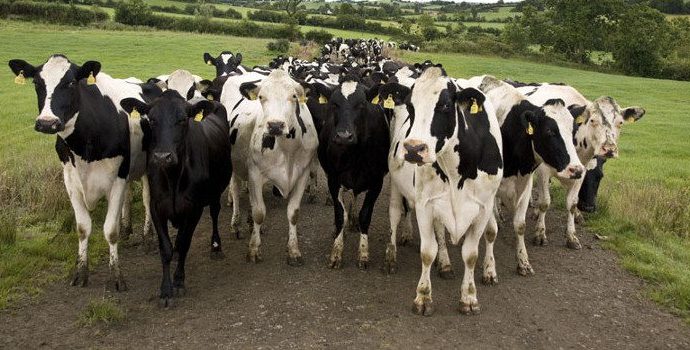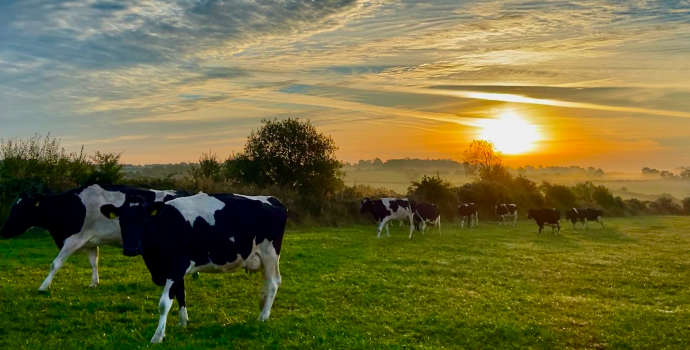Managing Dairy Calves

Introduction
The ambitious Government manifestos of Food Harvest 2020, followed by Food Wise 2025, set out targets for the growth of Irish milk production and export value at the end of the EU milk quota regime, to respond to a fast-growing global demand for sustainably produced dairy products. Irish dairy farmers, and the co-operative processing sector, responded to the challenge, growing production, making investment on farms, in processing and in marketing to increase the volume and value of output and find new export outlets.
This strong growth has given rise to a number of challenges around sustainability, climate, and labour availability, all of which are being dealt with under various plans and initiatives.
In this paper, the National Dairy Committee proposes to focus on the issues of calf care and value to optimise the economic attractiveness and profitability of calves produced from the dairy herd for calf rearers and beef farmers.
Dairy farmers take full responsibility for all the calves born in their herds
The expansion of the dairy herd and the larger number of dairy calves it has given rise to, as well as the compact period in which they are marketed all put a strain on often insufficient farm facilities, in marts and create additional pressure on export capacity.
Dairy farmers have a vocation to raise and breed animals whose welfare coincides with their economic interests. Beyond this, most have bred their cows over generations, and have a caring and empathetic relationship with them which goes well beyond treating them well because of their economic value.
Farmers are very clear what constitutes best animal care practice on farms, and this includes zero tolerance to abusive treatment or cruelty towards animals.
Dairy farmers take the view that the dairy calves born from their herd are their responsibility, whether they are heifer calves they will retain as replacements, or male and female calves which will be fattened on or off the farm or exported.
However, it is essential that there would also be rigorous respect for animal welfare by the other stakeholders involved at every point along the chain when animals leave their farms for fattening on another farm, for later slaughter or for export.
In order to ensure the maintenance of the highest animal care standards and to optimise the economic value of dairy calves into the beef chain, IFA proposes a package of measures as follows:
Action at farm level:
- Dairy farmers will take their full responsibility with regards to all calves born on their herds, and will seek to optimise calf care and health and minimise mortality through the use of best calf management and rearing practices. This must mean that the calf leaving the dairy farm has a real economic potential for whoever buys/rears on that calf.
- Farmers will favour quality AI using bulls from the Dairy Beef Index recommended list to ensure a higher quality and value calf, and complete the breeding season only with pedigree stock bulls, improving the genetics being used. This is to ensure that the resulting calf is economically attractive to potential beef farmer buyers/rearers;
- Registration must be accurate, including the correct date of birth;
- To spread out the current seasonal glut of calves coming to market over a short few weeks in spring, options should be explored to encourage farmers to hold calves longer on farms – bearing in mind the 42-day limitation for TB testing – or consider contract rearing. This must be supported through grant aiding of calf housing and feeding facilities including automatic calf feeders, through TAMS-type grants. To be effective, those grants should apply over and above the TAMS maximum grant levels.
- Recourse to young calf slaughter facilities must only be used as an absolute last resort and be phased out;
Action at advisory/industry stakeholder level
- Communication with farmers in the coming months, through Discussion Groups, Teagasc advisory services, conferences and open days, Animal Health Ireland, and co-ops, must engage farmers on the use of best practice regarding the care of all calves born on their herds;
- Based on the Teagasc Grange Dairy Beef project, Teagasc must produce and deliver a Dairy to Beef management and advisory template/course deliverable through Knowledge Transfer (KT) to support livestock farmers undertaking contract rearing or the straight purchasing of calves for later export and/or the veal/beef markets;
- One to one dairy and beef farmer partnerships should be encouraged to foster trust, contracts should be facilitated and a calf transaction platform developed to ascertain calf value based on quality, breed, sex and ICBF genetics information and to facilitate the flow of calves from dairy to beef farms. Marts have an integral part to play in this, providing information on weights, grading, price, and the logistics around transport.
- Industry and Bord Bia must explore the feasibility of developing an export market for Irish bred and produced rosé veal meat;
- An information and advisory campaign must be undertaken by Teagasc, conveyed through discussion groups, beef factories and dairy co-ops to challenge mindsets and highlight the economic value of the dairy calf to beef system.
- The importance to the dairy sector’s image of what happens on farms is critical to our dairy export industry. Co-ops have a big part to play in protecting our brand, by engaging directly with farmers on this topic.
- Incentivisation through the type of joint scheme undertaken by Glanbia and Kepak (Twenty/20) would help change mindsets and encourage participation;
- Research must continue on sexed semen and the best practice to optimise its cost efficiency on Irish farms, with the establishment of an Irish laboratory. This must be accompanied by a strong advisory campaign to encourage and support farmers in using it;
- The rate of genetic improvement achieved through the EBI in the dairy sector must be replicated in the recently launched ICBF Dairy Beef Index (DBI). An advisory campaign must be developed and delivered through Teagasc and co-ops to optimise its use and value on farms.
Action at Government level:
- Grants (TAMS-type) must be made available to farmers to help them develop calf rearing facilities. These should apply in addition to the maximum TAMS levels;
- DAFM must appropriately police the sales and handling of calves through marts. Only healthy, hardy calves fit for transport and sale must be brought by farmers to marts;
- DAFM must approach ferry companies immediately with a view to securing alternate day sailings in Spring 2020 to minimise pressure on transport, shipping and lairaging capacity; Also, the option of additional walk-on-walk-off shipments for export, which would require no additional lairaging on arrival, must be fully explored.
- DAFM must obtain that Irish exporters co-ordinate their trips and bookings both on sailing ships and for lairaging facilities in France, especially at the height of the spring season;
- DAFM must work with Irish exporters and with the French authorities to ensure that the EU welfare standards, the highest in the world, are duly enforced. This must ensure optimum watering, housing and feeding capacity during transport and at lairage so that calves are watered adequately, fed rapidly and rested comfortably through the process;
- DAFM must also insist that Irish exporters, and through their French authority counterparts lairage operators, provide adequate training of all staff in contact with or with responsibility for handling calves regarding their proper welfare treatment in loading, off-loading, transit, and on feeding and resting.
Conclusion
The success of the Irish dairy sector expansion and the increased exports of top-quality dairy products which consumers the world over can trust depends on every aspects of its sustainability.
Consumers the world over increasingly want to know that the dairy products they consume are produced not just healthfully and environmentally responsibly, but also ethically from an animal welfare point of view.
Bearing in mind that a substantial portion of the beef produced in Ireland originates from the dairy herd, it also behoves dairy farmers to ensure best calf husbandry, quality and value to maximise the economic returns to beef farmers further down the line.
As farmers, while we already do well, we need to continue to improve our performance on all those fronts.
CL/IFA/10th September 2019



